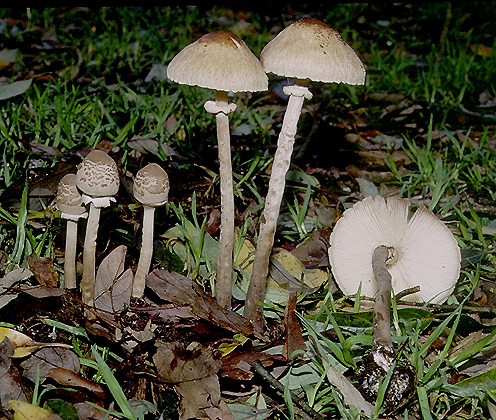
Macrolepiota mastoidea (Fr. : Fr.) Singer

Common name: None.
Description: The caps measure 510 cm in diameter and are more or less conical, but as they expand they become umbonate. The cap surface is dry and decorated with concentric rings of fibrillose, dark brown scales which become progressively more crowded towards the centre until the central umbo is completely brown; the background colour is white or very pale brown. The cap margins may have small fragments of the veil hanging from them. The gills are white or pale cream-coloured, crowded and free. The stem is usually 815 cm long and about 5 mm thick except at the base which is bulbous and often about 1 cm in diameter. The stem is dry, white and has a very prominent double ring more or less in the middle.
The spores are 1014 × 79 µm, ellipsoidal, smooth with a germ pore and colourless. The spore print is white.
Substratum: Macrolepiota mastoidea occurs in small groups on soil among litter. It is to be found in very sheltered sites at forest margins and has been found in both eucalypt forest and subtropical rainforest.
Distribution: Known from Queensland, New South Wales and Victoria.
Notes: This species appears to be similar to the European M. konradii which is considered edible. However, nothing is known of the toxicity of the Australian species, and it should not be eaten. This fungus is reasonably common in the mountains of south-east Queensland.
